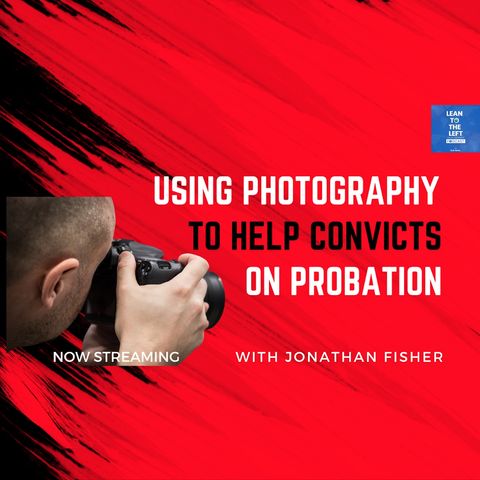Participatory Photography, Reforming Probation

Download and listen anywhere
Download your favorite episodes and enjoy them, wherever you are! Sign up or log in now to access offline listening.
Participatory Photography, Reforming Probation
This is an automatically generated transcript. Please note that complete accuracy is not guaranteed.
Description
To counter negative stereotypes afflicting probation clients across the country, award-winning filmmakers/editors, Jonathan Fisher and George Carrano handed cameras to people in the probation system including its officers. What transpired...
show moreWhat transpired was an exercise in "participatory photography*" now represented in a book and PBS documentary called, In A Whole New Way: Undoing Mass Incarceration By A Path Untraveled.
Introduced in the book are tools and possible ways to transform a system that comprised 4 million people in 2020. The focus of “In a Whole New Way” is keeping people out of jail and informing readers and viewers about probation, a sorely misunderstood and effective alternative to incarceration.
It’s both a film and book by the nonprofit Seeing for Ourselves, charting a whole new way to criminal justice reform. In this visually powerful medium, Fisher and Carrano share the intriguing history of probation which dates to the 19th century.
Prior to producing In a Whole New Way, the duo applied participatory photography inside of NY's project housing. Seeing For Ourselves is the non-profit umbrella. and the former book and documentary were called Project Lives.
Jonathan joined Mark Bello and myself for this episode on both the Lean to the Left and Justice Counts podcasts. Here are some questions we asked Fisher:
Q. You guys wrote “In a whole New Way” to shine a light on problems involved in our probation system today, right? Tell us about that.
Q. The book talks about probation reform, but isn’t much more needed when it comes to our system of criminal justice?
Q. Can you explain for us generally how the probation system works and why it needs reformed?
Q. In the book’s preface, you write that “By reforming probation and re-establishing it as a viable option for many ordinarily bound for jail or prison, we Americans will have embarked on one of the most promising paths toward this end.” So, are you advocating an expansion of probation to replace incarceration, at least in some cases?
Q. What piqued your interest in working on this project? What's your background; how did you get into this practice of participatory photography?
Q. What exactly is participatory photography and how is it used in this project?
Q. You were working in the NYC housing projects. What was that initiative like?
Q. How did you wind up serving New Yorkers on probation? What did you do?
Q. What surprised you most about probation as a criminal justice sanction?
Q. How are you leveraging the film and book for criminal justice reform?
Q. Who were the photographers and where are they now?
Q. You have a new initiative planned. Tell us about that.
Q. Many of those caught up in the New York City justice system are people of color. You and Carrano obviously are not. So, are you seen by some as sort of “white saviors?” Is that a bad thing?
Q. Tell us about the film, where it can be seen, and where your book can be purchased.
Information
| Author | Bob Gatty |
| Organization | Bob Gatty |
| Website | podcast.leantotheleft.net |
| Tags |
Copyright 2024 - Spreaker Inc. an iHeartMedia Company

Comments